"Hello, World!" is an immersive performance for very young children, featuring a performing trio, 360-degree projection design, and custom ambisonic sound.
"Hello, World!" is directed, produced, designed, and performed by Olivia Herneddo, featuring performances by Alejandro Bastien and Julio-Cesar Sauceda, and accompanied by custom ambisonic sound designed and performed by Shomit Barua.
"Hello, World!" follows three adventuring friends who awaken in a garden and embark on a journey where they climb trees, fly through the sky, swim in the deep ocean, and float through outer space, saying "Hello!" to the fantastic world around them. Produced in response to the COVID-19 pandemic, "Hello, World!" intentionally centers on very young children and their families, immersing them in a 360-degree environment of sound, sight, and playful interactions with performers. Using Google's Tilt Brush VR painting software and Unity Game Engine, "Hello, World!" presents technology-driven visuals to young people without the need for cumbersome headsets or 2D monitors. This production can be experienced communally and inclusively by audiences of all ages.
The choreography of "Hello, World!" is inspired by research sessions observing how children aged 2-6 interact with custom-designed, age-appropriate installations featuring motifs such as earth, water, and sky. "Hello, World!" debuted in March 2022 as a multi-channel 360-degree experience at the i.d.e.a. Museum’s sound dome in Mesa, AZ, and later as an excerpted single-channel performance at The National Sawdust in Brooklyn, NYC, with DBR Lab II. This adaptive experience can be reformatted for children and their families based on the constraints of any venue, though it is best viewed in a 360-degree format.
"Hello, World!" inclusively presents high-quality performance art to audiences of all ages. By re-presenting choreography inspired by the movements of very young children through non-verbal performance techniques within a sophisticated audio-visual landscape, "Hello, World!" exemplifies inclusive, media-driven performance art for a 21st-century intergenerational audience.
"Hello, World!" was generously funded by Arizona State University’s Graduate and Professional Association, the Herberger Institute Design & the Arts Polaris Grant Award, and the School of Music, Dance, & Theatre.
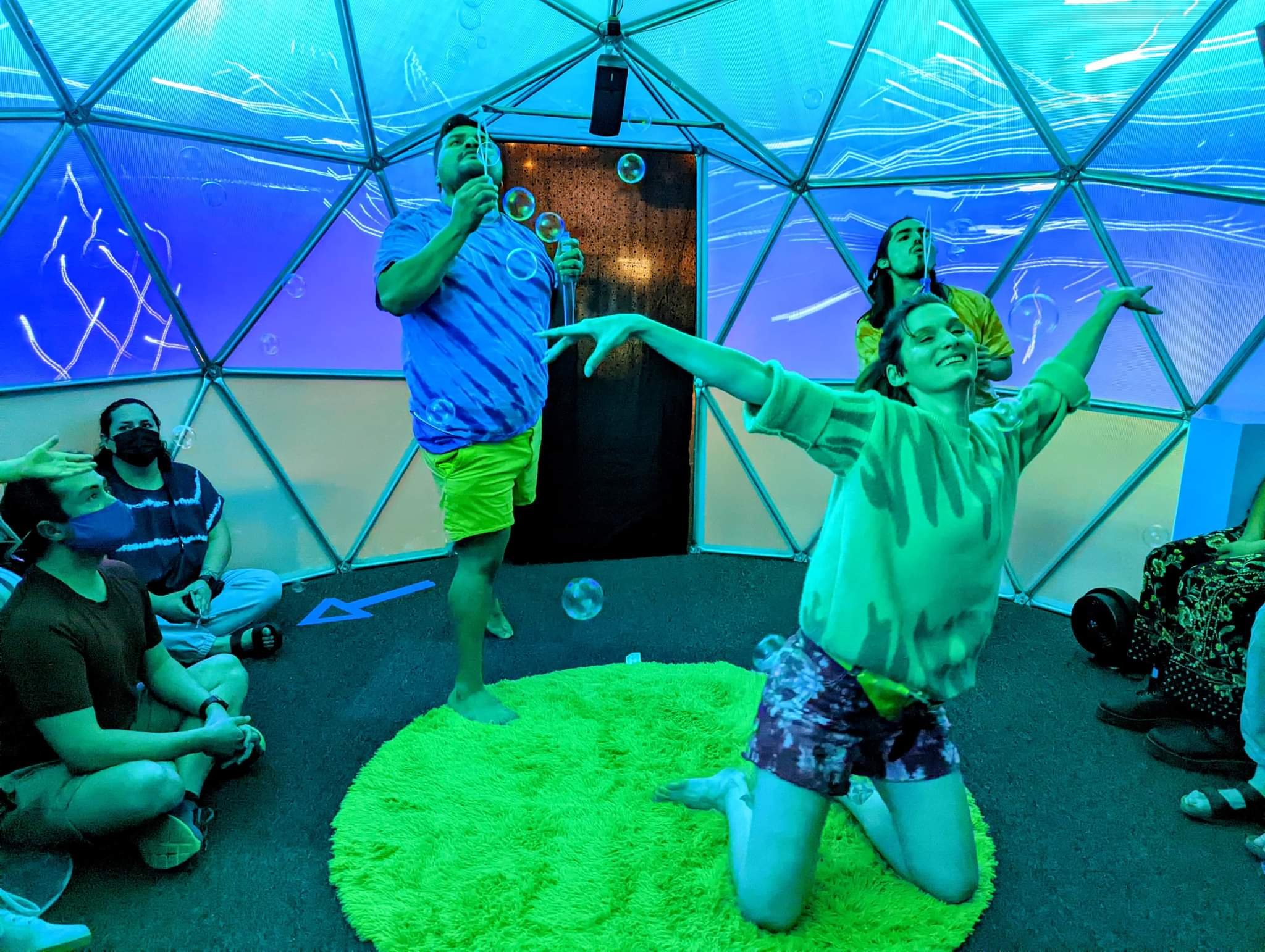
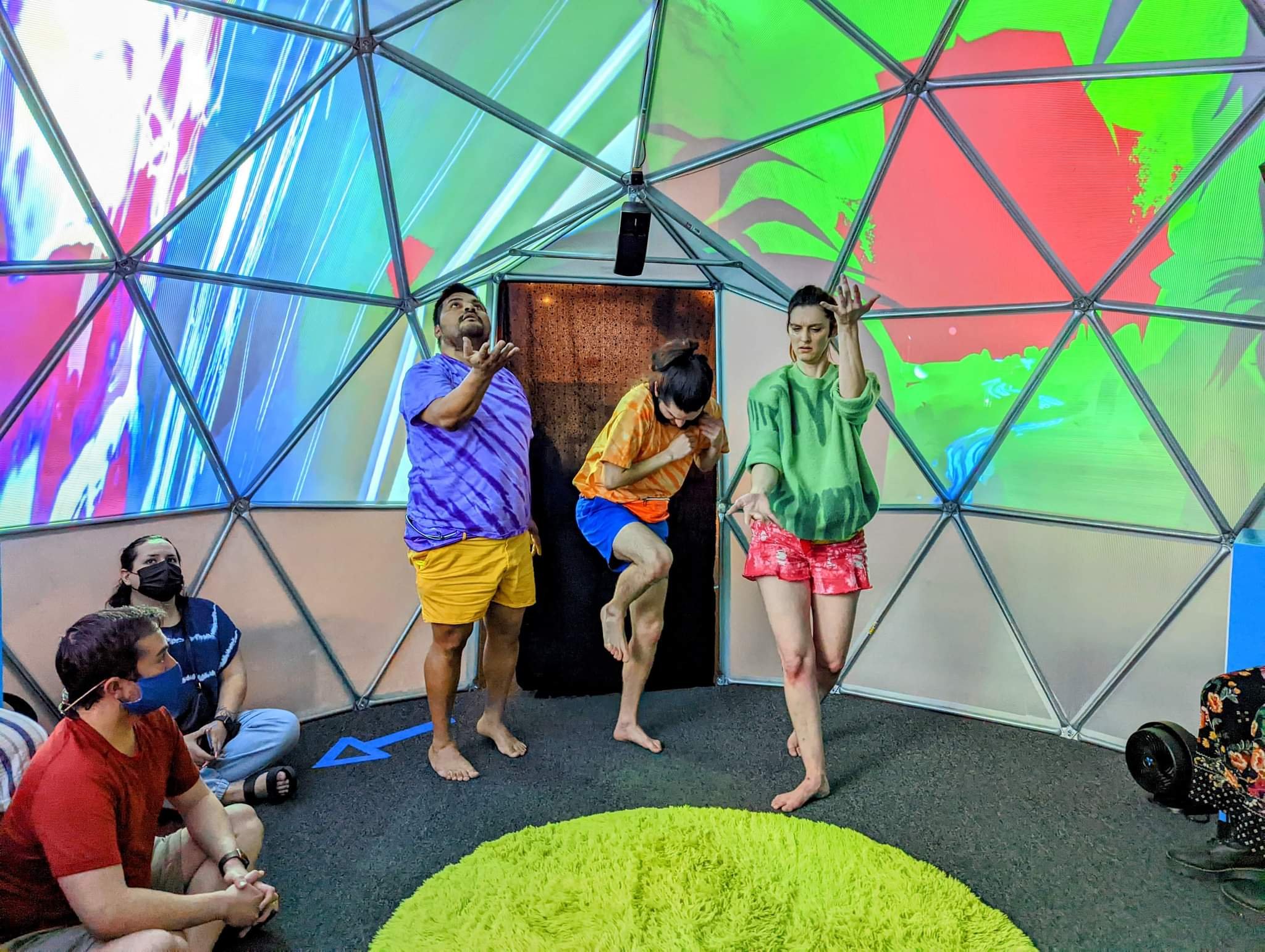
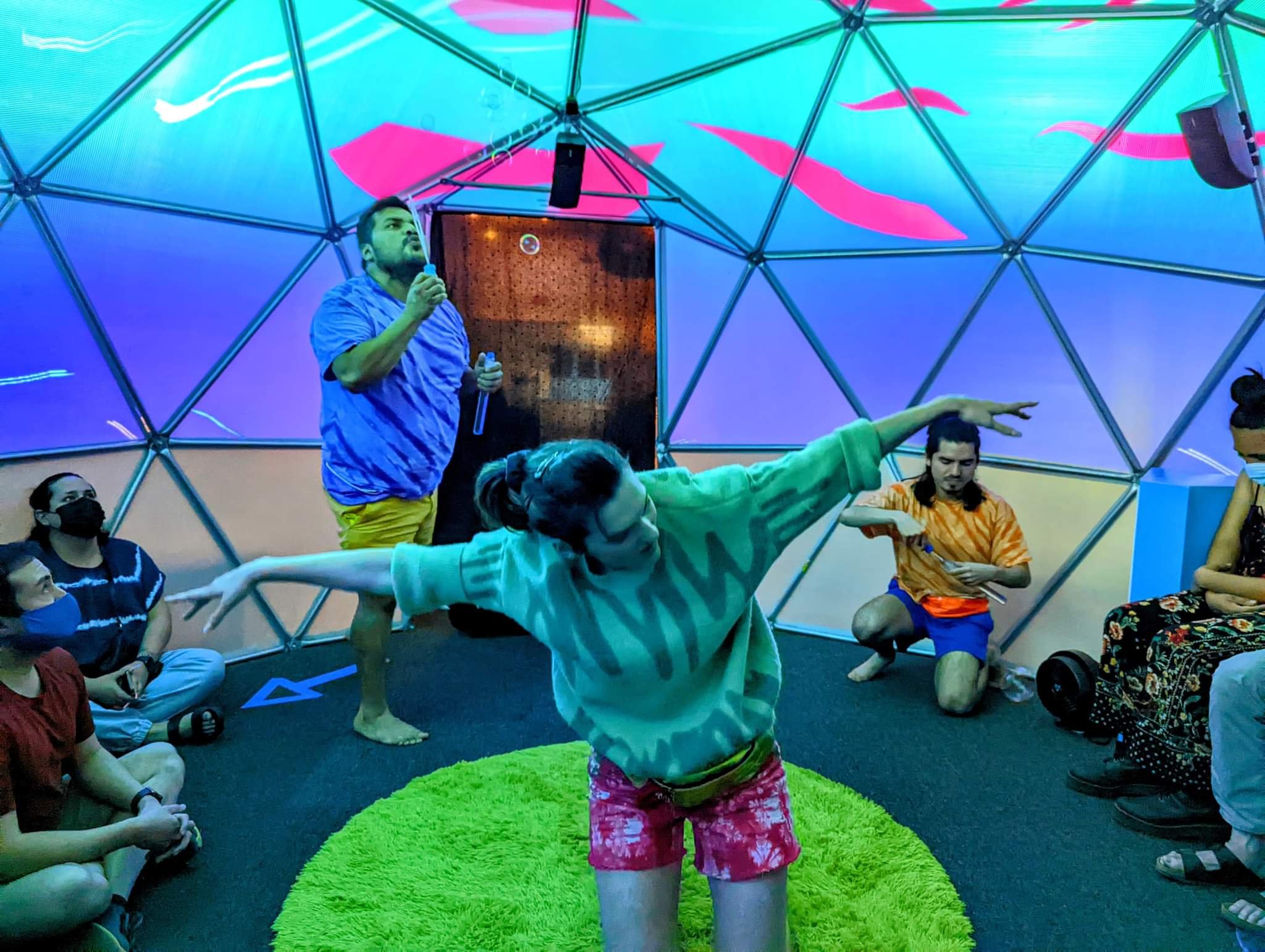
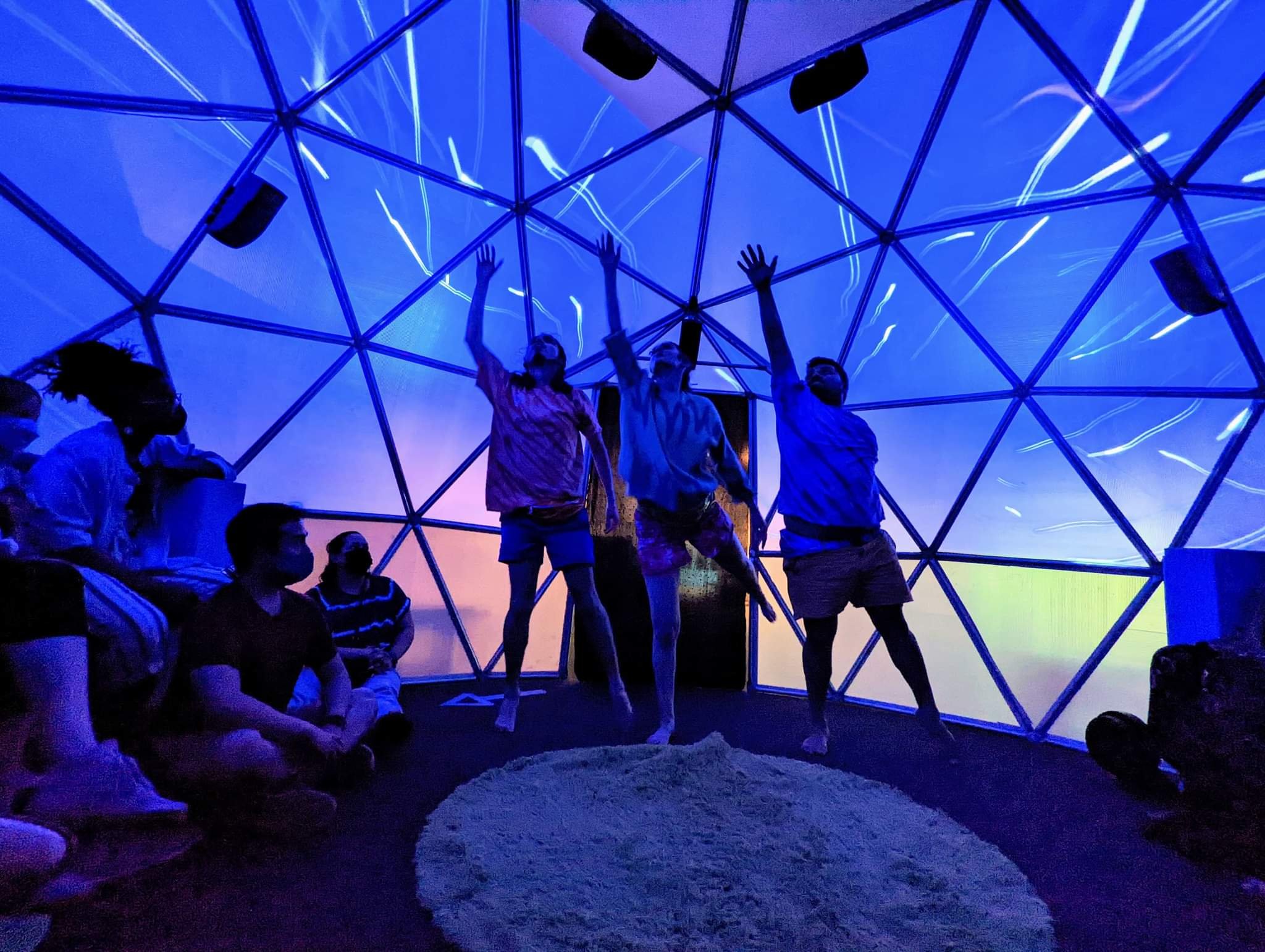
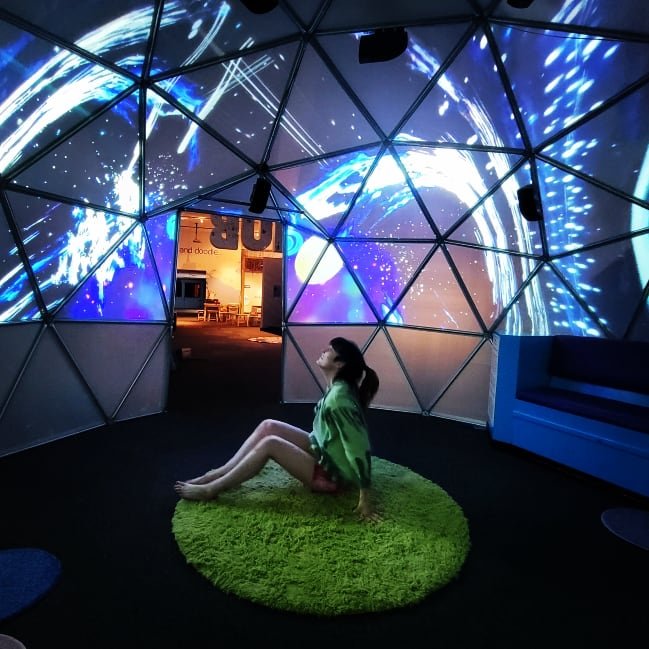
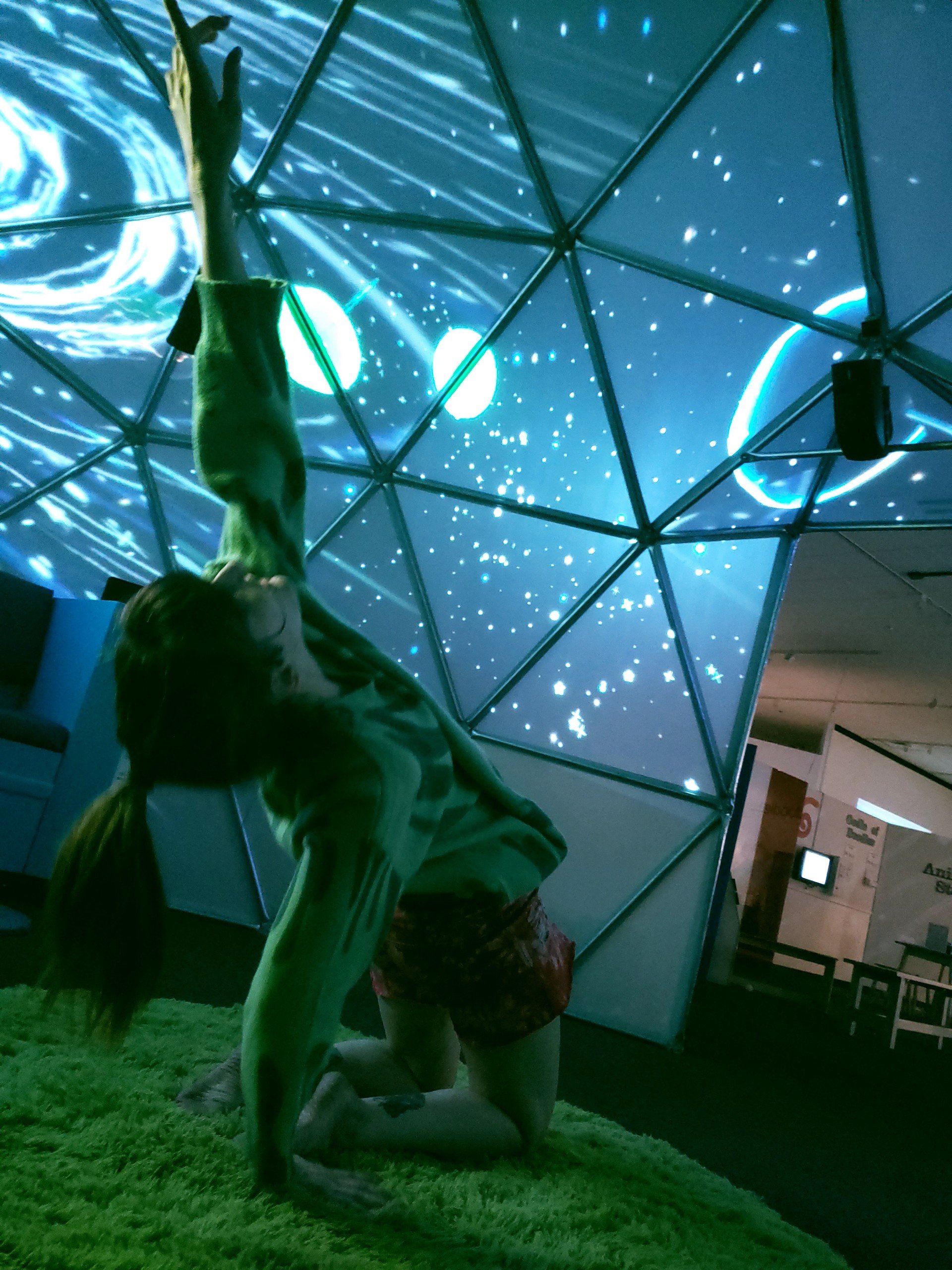
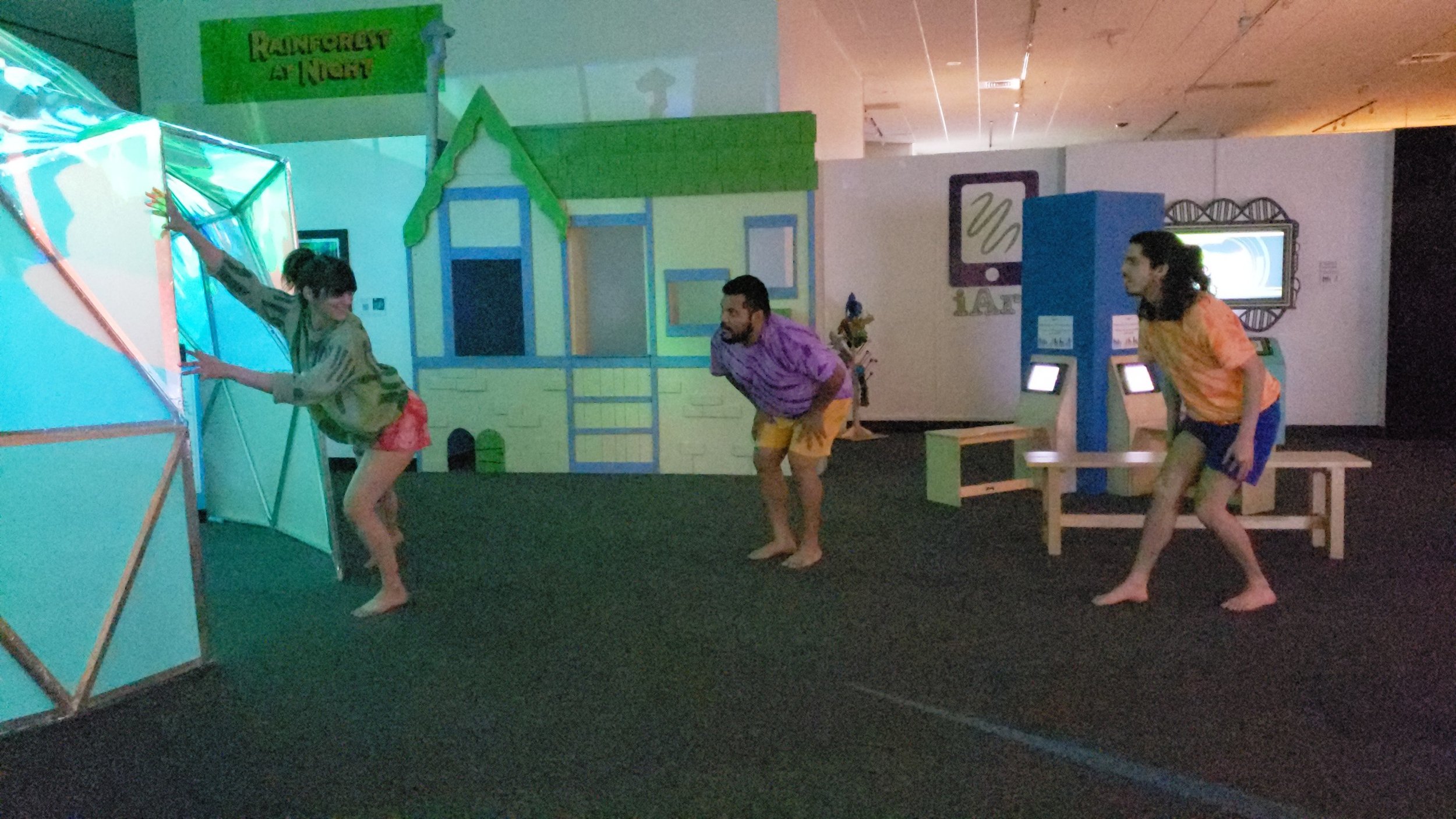
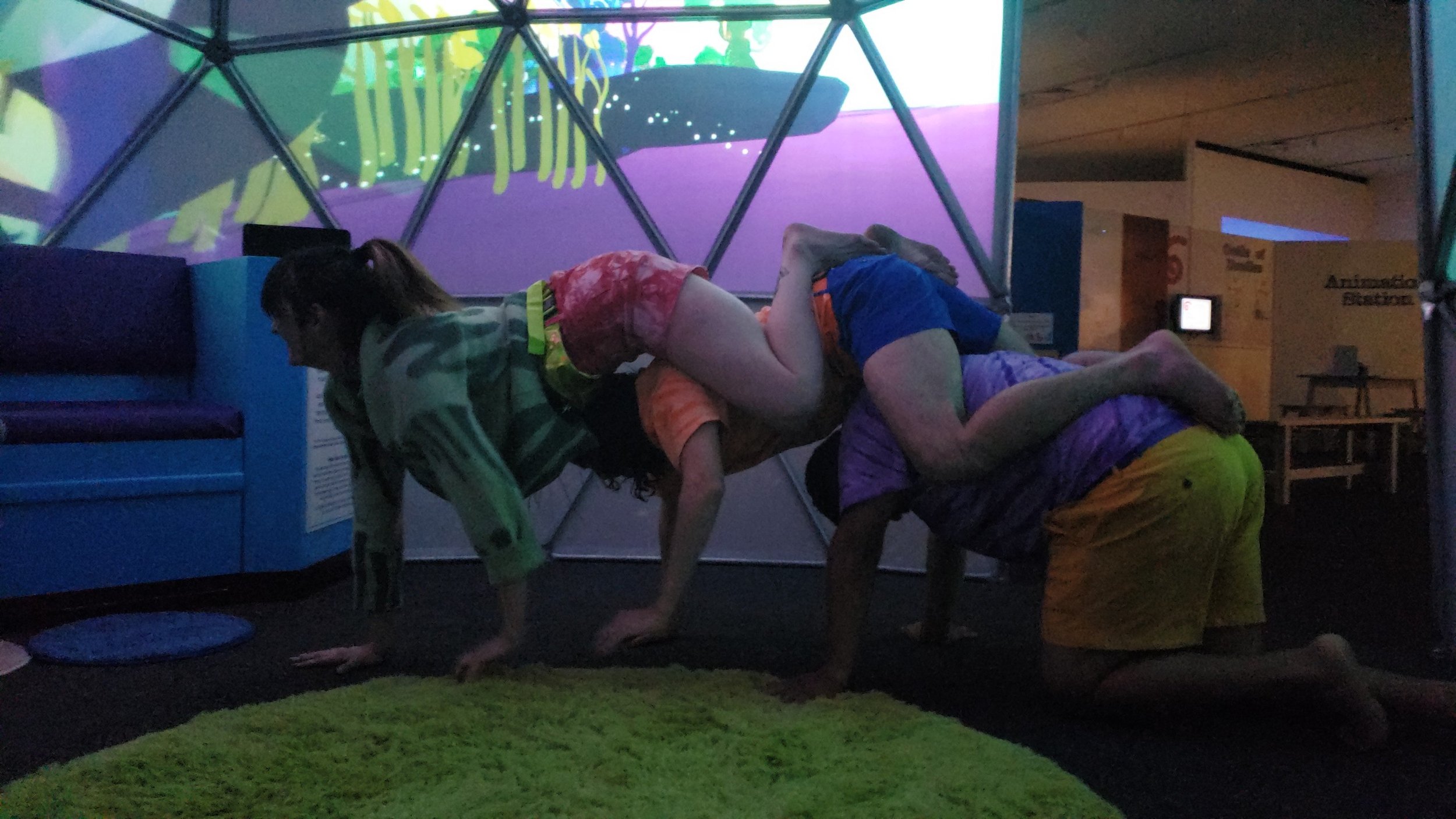
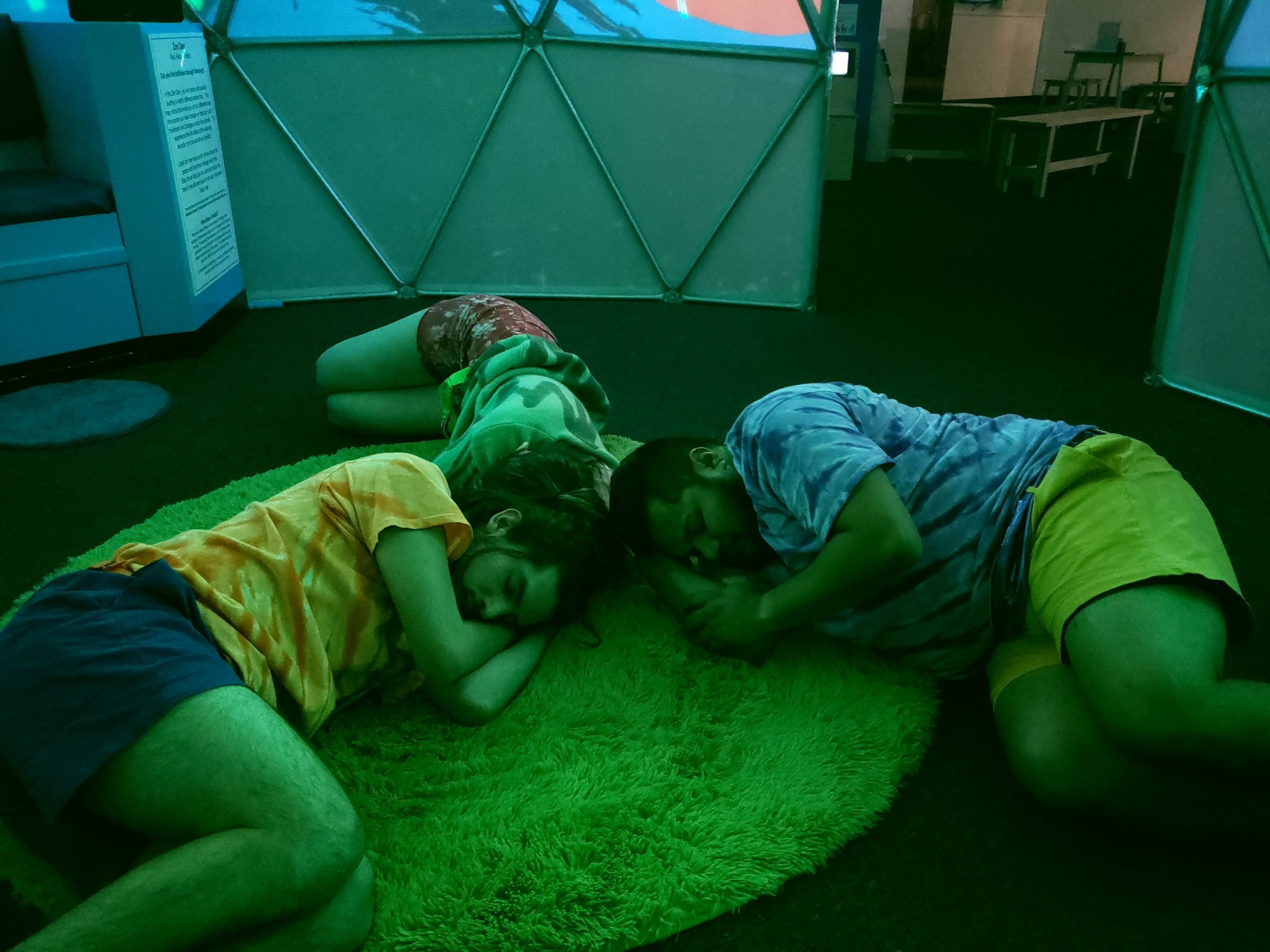
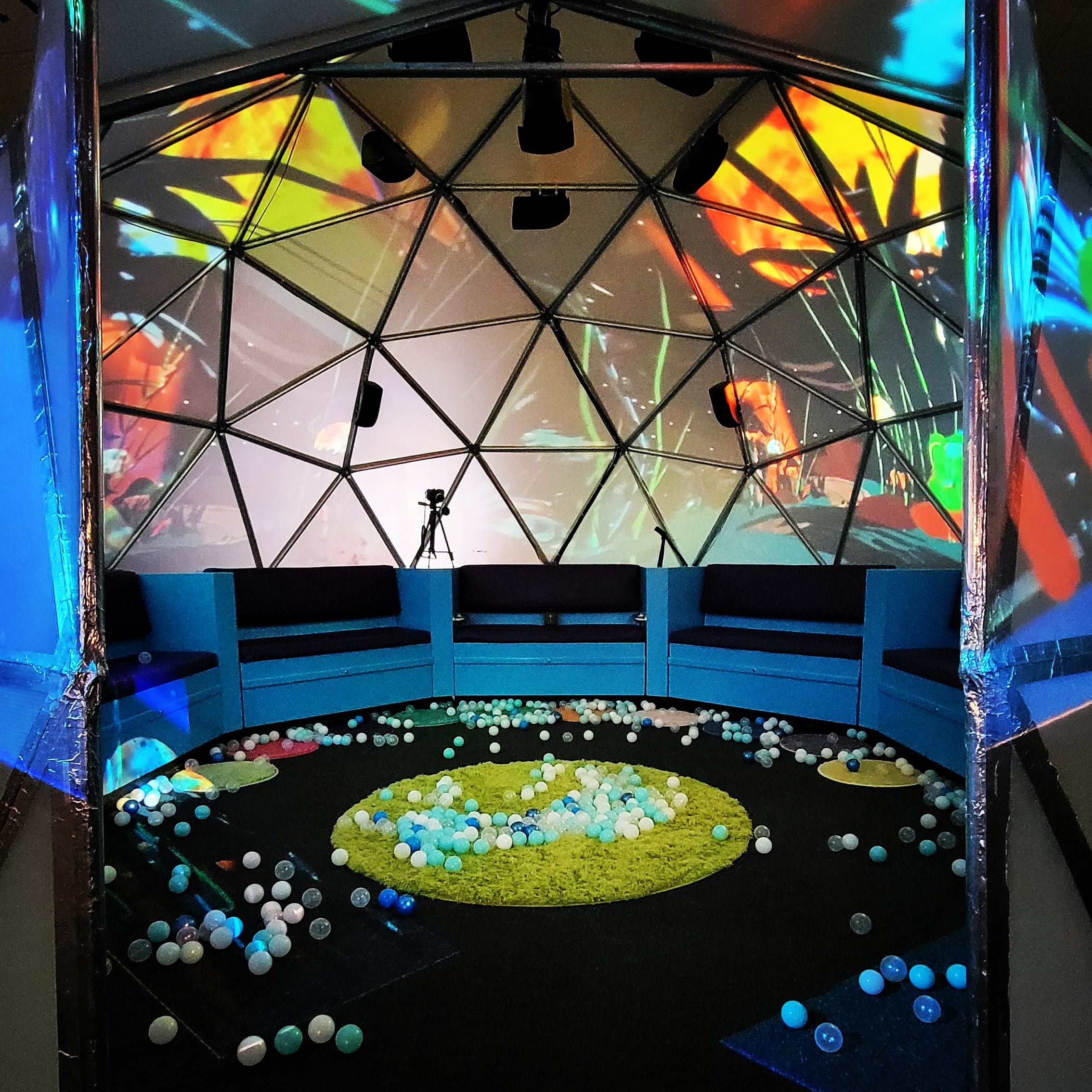
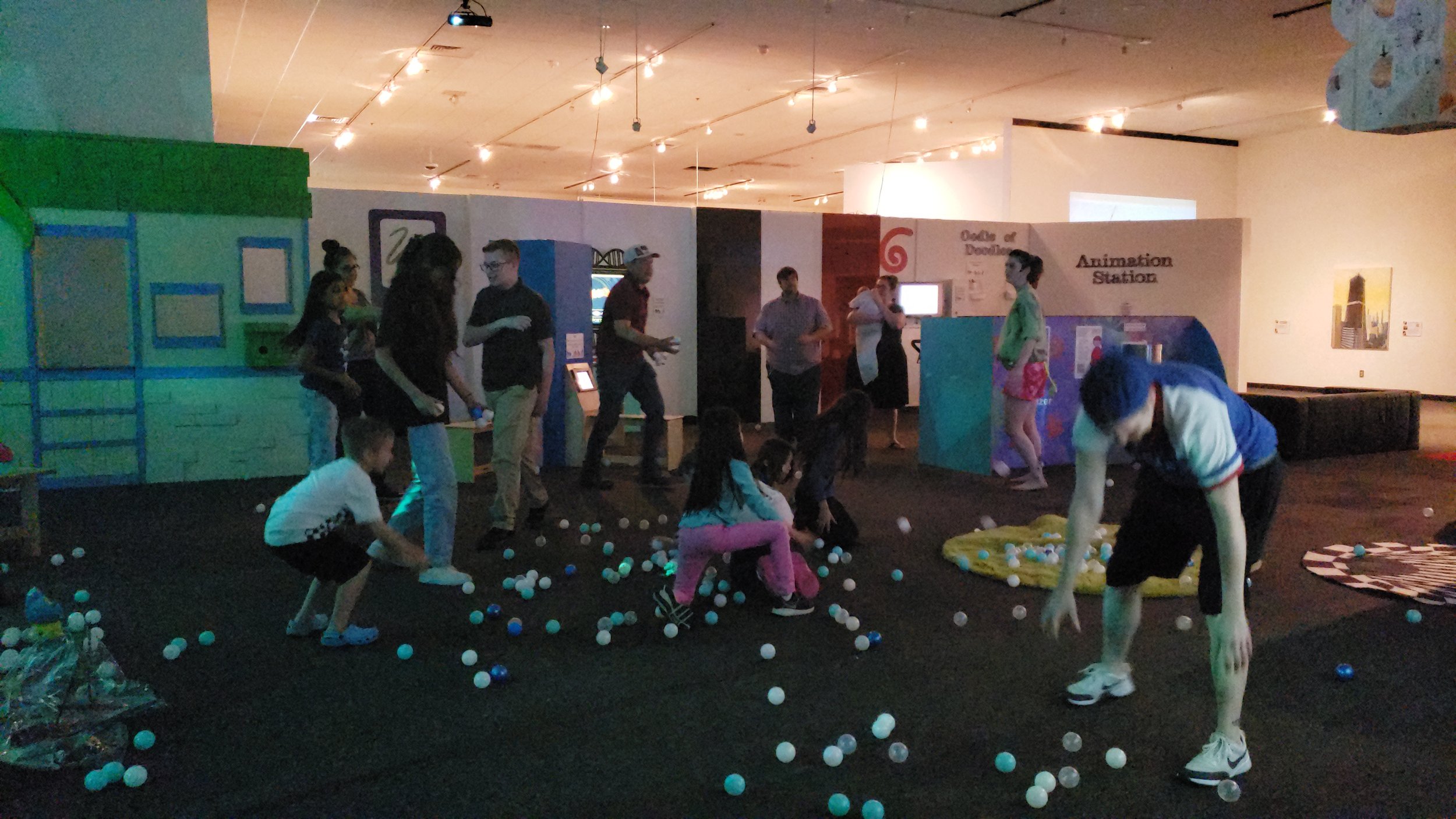
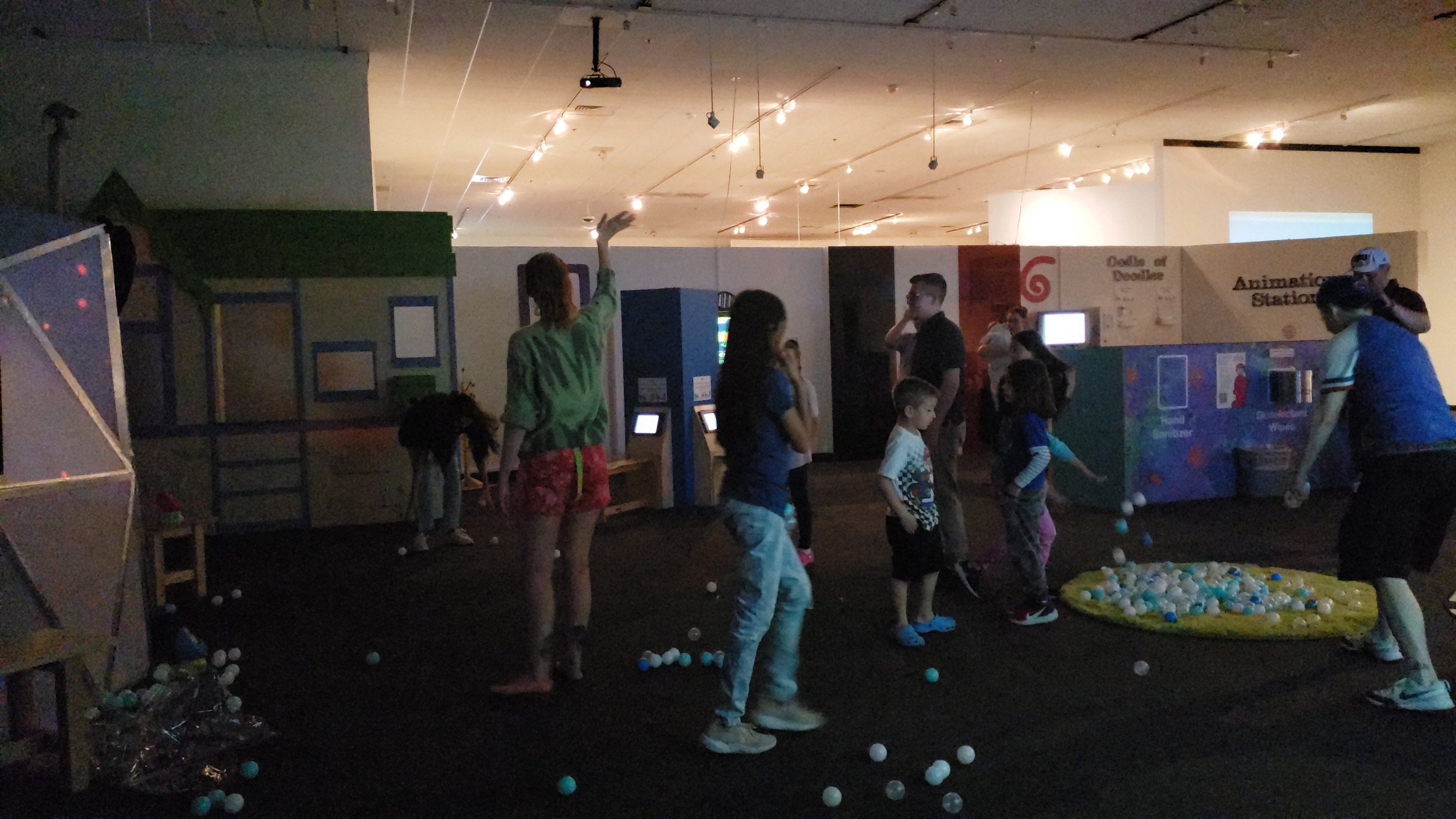
“Hello, World!” MULti-channel FULL SHOW Performed at THE I.D.E.A. MUSEUM, APRIL 2022
“hELLO, WORLD!” VR SCENIC DESIGN EXCERPt
materials: google tiltbrush, unity game engine
“Hello, World!” single-channel EXCERPT | Performed at the nATIONAL SAWDUST, APRIL 2022
Photo by Keegan Carlson
Meet the HELLO, WORLD! Team
Olivia Hernandez (ONOH)
Director, Media Designer, Producer | Olivia/ONOH is an interdisciplinary artist who takes many forms - animator, educator, performer and creative coder. A Theatre MFA candidate at Arizona State University with a focus on Digital Media & Performance, she is deeply curious about the ways in computer-driven technologies and non-traditional collaborators (from chatbots to very young children) enable her to build worlds, tell stories, and consider our relationships within these fantastic spaces. A multicultural Latinx woman, she calls both Miami, FL and Lawrence, KS home, and spent many years in the Lawrence community teaching various intergenerational workshops focused on either digital and analog craft art making. Olivia is an ASU Gammage Teaching Artist trained in the Kennedy Center Arts Integration method, with a BFA in Expanded Media from the University of Kansas and a BA from Baker University double-majoring in Political Science and International Studies. She currently lives in Tempe with her incredible partner, Bryce, and their two fur-babies. Olivia doesn’t want you to leave this space without feeling a profound sense of joy, delight, wonder and awe.
Shomit Barua
Sound Design & Original Score | Shomit Barua is an intermedia artist specializing in ecoacoustics, responsive environments, and emergent narratives. His work is rooted in poetry and architecture, reflecting their shared tenets of contained space, economy of materials, and movement that is both physical and emotional. Combining novel technologies with esoteric programming languages, he blurs the line between installation and performance by employing sound, object, and image. Digital and analog techniques are fused to investigate his core subject: the presence of the mind and body in physical space. Shomit is a doctoral researcher at ASU’s School of Arts, Media, and Engineering. He also holds an MFA in Poetry from Bennington College and teaches writing at Arizona State University. More of his work can be found at shomitbarua.com
Alejandro Bastien
Performer | Alejandro Bastien is a Playback Theater conductor, theater facilitator, and performer. He designs creative processes where participants can build agency about their own narratives and emotions using theater and creative tools to express, connect and create. He studied a BFA in Theater UNAM, in Mexico City, where he is originally from. He studied Theater Philosophy in an academic exchange at the University of Buenos Aires. Afterward, he worked as a teaching artist, voice teacher, and co-created Memorias a la deriva a Playback Theater group. Alejandro is currently an MFA student in Theatre for Youth & Communities at ASU. His research focuses on theater for queer communities. In the future, he wants to continue to develop community theater programs for queer populations, collaborate in physical theater plays and co-create theater for social change projects. I don´t want you to leave without feeling that nature can be wild and so are we.
Julio-Cesar Sauceda
Performer | Julio-Cesar Sauceda is a second year MFA in Dramatic Writing student at ASU. He is originally from Belton, Texas. Currently, He also works for Rising Youth Theatre. He doesn’t want to leave this space without saying that he is incredibly grateful to be a part of a production that is geared towards young people.
ABOUT THIS PROJECT
Prior to this project, my practice was rooted in an interdisciplinary worldview that valued working with non-traditional partners and materials, seeing humans and computers as equally viable partners in art-making. For example, I collaborated with AI chatbots as narrative partners to devise magical realism texts, which I illustrated using digital collage, stop motion, and 3D animation techniques. I explored how interactive programming can create dynamic, user-customizable landscapes for palliative effects. Additionally, I engaged in what I call networked performance, a form of techno-puppetry where my corporeal body is networked to animate aspects of the larger audio-visual body at play.
The idea for "Hello, World!" came in March 2021. Enrolled as an apprentice through ASU Gammage's Molly Blank Teaching Artist Program, I clearly remember our guest speaker, Melanie Rick, declaring, “Children today are traumatized and bored. They need art now more than ever. They need creative play.” And she was right, anecdotally and statistically. According to a study published in Pediatrics last October, researchers found that over 140,000 children in the US lost a parent or caregiver who provided their basic needs, daily care, security, and love. Any child under the age of five in 2021 has experienced one-fifth of their social development isolated and sequestered from the outside world. Melanie's statement that day became an instant call to action.
what is play?
Responding to this call meant using my creative skills to foster play for a traumatized population. But what is play? Definitions of play, like the experience itself, vary, but its socio-cultural, physiological, and developmental benefits are well-researched. Dr. Stuart Brown, founder of the National Institute for Play, asserts that play is a primal activity, preconscious and pre-verbal, an important sticking point for me. Play historian Scott Eberly suggests that most people experience six steps when playing: anticipation, surprise, pleasure, understanding, strength, and poise. Play shapes the developing brain by creating flexible cognitive spaces for young minds to test their reality, assume new roles, and make new connections. Animal scholar John Byers speculates that the brain makes sense of itself through simulation and testing during play. Studies indicate that play correlates with the development of the brain's frontal cortex, which regulates cognition. Play is present in nearly every species in the animal kingdom, including adult humans, though we may like to forget that.
the aesthetics of joy
In "Joyful: The Surprising Power of Ordinary Things to Create Extraordinary Happiness," author Ingrid Fetell Lee charmingly identifies ten aesthetics of joy: energy, abundance, freedom, harmony, play, surprise, transcendence, magic, celebration, and renewal. My design processes were heavily informed by Lee's aesthetics, particularly Energy through color and light, the Magic of invisible forces and illusions, Freedom's wild nature and desire for open space, and Play marked by circles, spheres, and bubbly forms.
why the world?
Whenever in doubt, I start with a prompt offered to me in class by Max Bernstein in 2019: “build three worlds.” My response to that particular assignment was to visually represent my visions for land, sea, and air. Organizing the world into these elemental realms is always a rich starting point for me, but the pandemic gave this structure greater urgency and meaning. I wanted to bring the world to children who have spent a significant portion of their young lives indoors and on screens.
So, these were the ingredients that swirled in the cauldron of my mind: first, to intentionally center very young children in the creative process in response to the trauma of the pandemic; second, to create a worldview of joy for and with very young people, guided by their playful, autonomous gestures; and third, to achieve this worldview by collaborating with the technologies I am most fond of: interactive software, electronic sound design, 360-degree projection design, virtual reality as a design space, and the embodied technology of a body moving through time and space.








